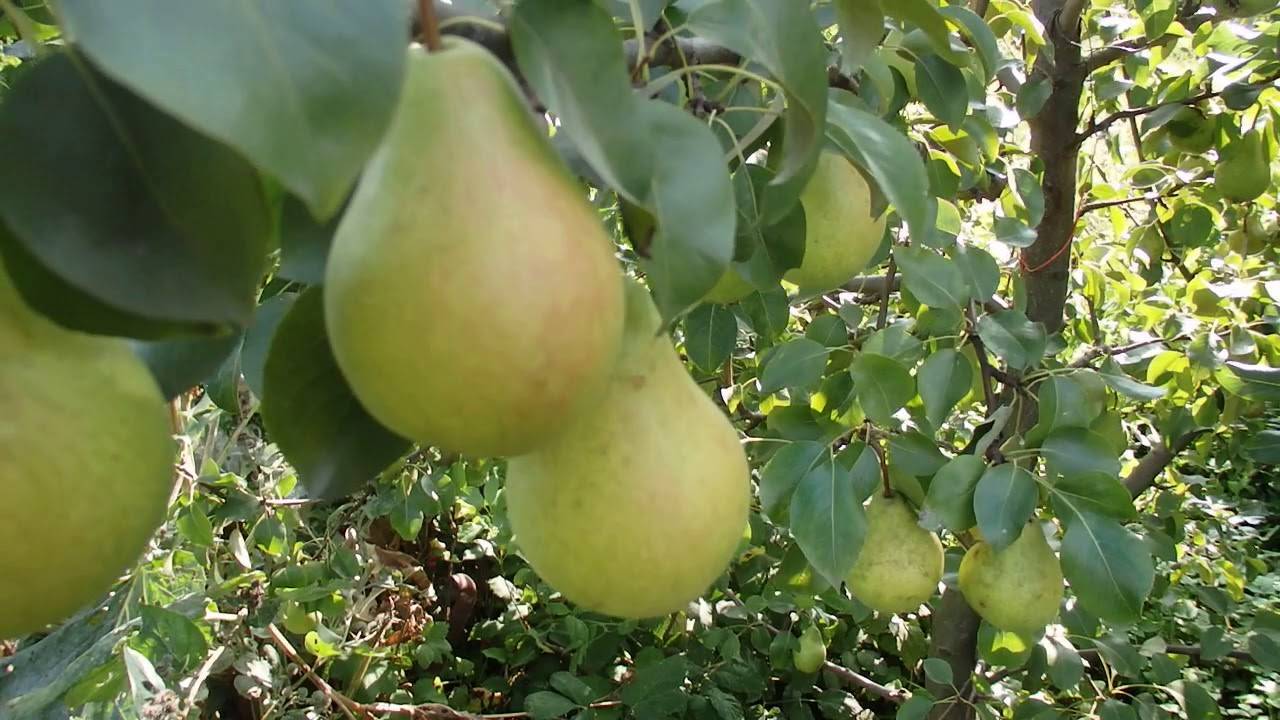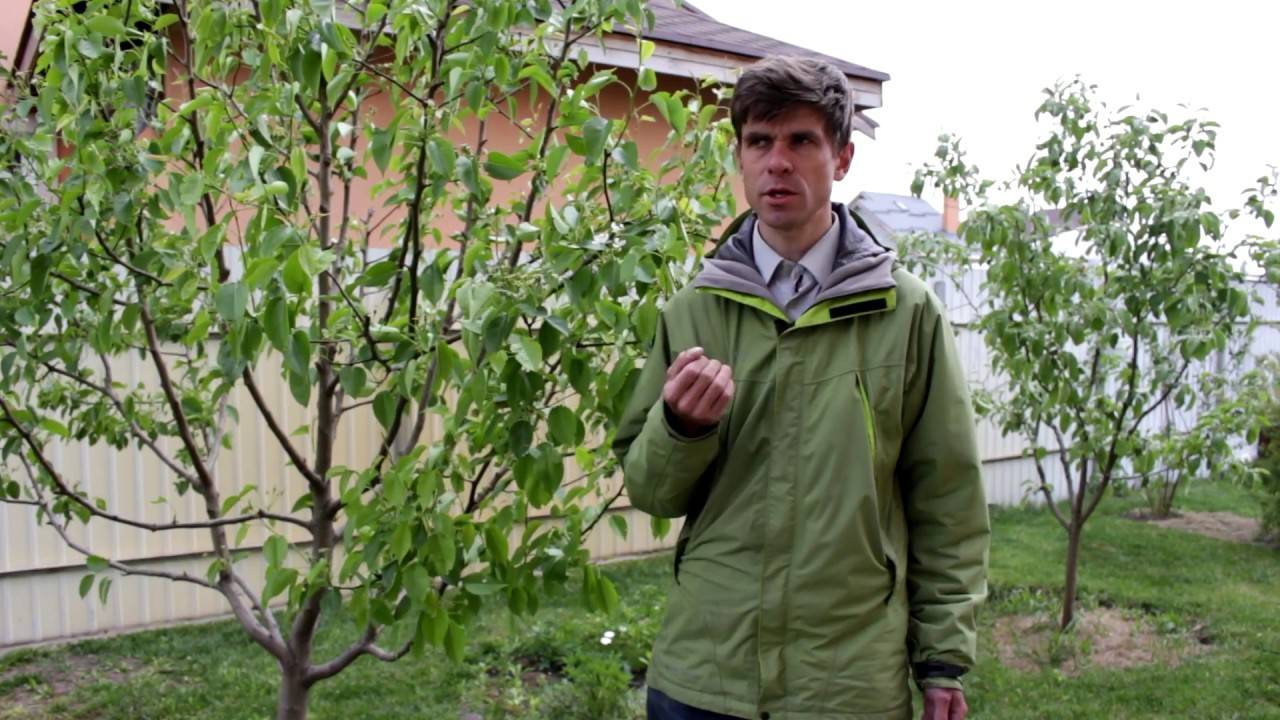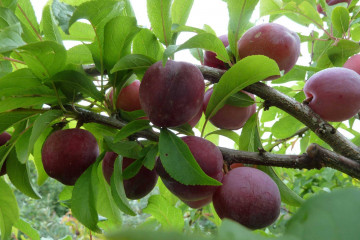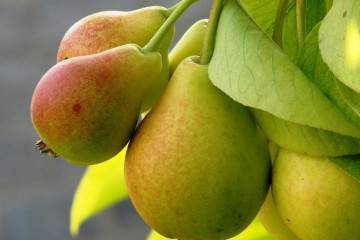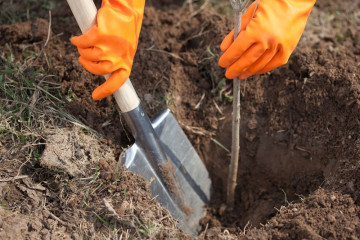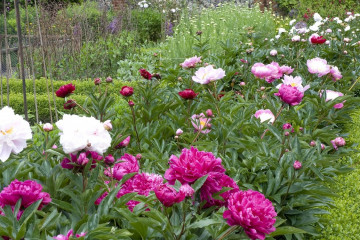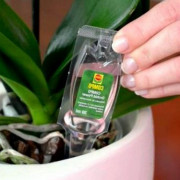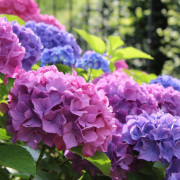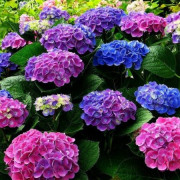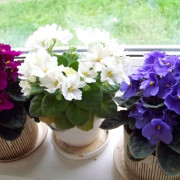How to feed a pear - in summer and autumn, when the fruits are tied
Content:
- General principles of fertilizing for pears
- How to determine what the pear is missing
- The main types of fertilizers for feeding pears
- Nutrient Application Rules
- How and what to feed a pear in spring
- Basic rules for autumn dressing
- How to fertilize a pear tree before winter
- Nuances of feeding seedlings and old pears
- Common mistakes
- Experienced gardening tips for beginners
Most gardeners believe that the pear is a rather moody tree, and it is not easy to get it to bear fruit well. However, in fact, caring for this plant will not take much time and effort. The main thing is to know the secrets of successful feeding, depending on the season. You should also choose varieties for planting that are zoned in a specific region, and then there will be no problems with growing.
General principles of fertilizing for pears
The following general rules for feeding pears must be observed:
- the composition of the fertilizer must be balanced;
- an excess of nutrients should not be allowed;
- in different seasons it is necessary to use different types of fertilizers;
- do not skip top dressing during preparation for winter, as nutrients will help the plant not to die during cold weather (this is especially important when growing thermophilic varieties in the northern regions).
Before fertilizing a tree, you should determine which substances it lacks. This can be done by visually assessing the state of the pear, looking at the leaves and branches.
How to determine what the pear is missing
The question of how to feed the pear cannot be answered unequivocally. It all depends on the situation. Experienced gardeners know the following secrets:
- Pale, yellow leaves that fly around quickly indicate a lack of nitrogen.
- If young shoots are lethargic, thin and break easily, the plant clearly lacks phosphorus.
- A shrunken tip and massive blackening of the leaves are a sure sign of potassium deficiency.
- When the leaves become light, and the veins on them are darker than usual, the pear needs iron. Also, such a symptom may indirectly indicate a magnesium deficiency.
If you ignore the signals that the plant gives, it will adversely affect the flowering and fruiting of the plant. Also, a lack of nutrients can lead to infection of the tree with a viral or bacterial infection (for example, leaf rot).
Also, when drawing up a plan for feeding a pear, it is necessary to determine the acidity of the soil. The pear loves a weakly acidic environment and grows poorly with increased acidity of the soil, therefore, in the second case, top dressing must be strengthened.
The main types of fertilizers for feeding pears
Most often, pears lack the following nutrients:
- phosphorus;
- potassium;
- nitrogen.
For feeding, you can use chemical fertilizers and organic matter.
Chemical fertilizers
Chemistry has a beneficial effect on fruiting and stimulates plant growth. The main advantage of chemical feeding is its balanced composition.
- Nitrogen.The most effective nitrogen fertilizer is ammonium nitrate. It stimulates root growth and fruiting. If everything is in order with nitrogen, pear fruits acquire a rich sweet taste and bright aroma.
- Phosphorus. Superphosphate and phosphate rock are used if the plant lacks phosphorus. It is recommended to introduce them during flowering and fruiting, as well as during preparation for winter. Phosphorus increases the defenses of the plant.
- Potassium. Stimulates the setting of flowers and fruits. Deficiency leads to late and uncomfortable ripening of pears. The best results are obtained with potassium sulfate.
Organic fertilizers
The best answer to the question of how to feed a young pear is organic fertilizers. The following types of organic matter can be distinguished:
- Manure and humus. Rich in nitrogen. They also contain beneficial bacteria that improve the composition of the soil and reduce its acidity. It is recommended to apply manure in the spring.
- Bird droppings. If the gardener does not know how to feed the pear in July, one of the best options is bird droppings, or guano. Freshly harvested droppings of poultry (chickens, geese, ducks) or industrially produced guano can be used as fertilizer. It is recommended to apply top dressing closer to winter.
- Wood ash. You can feed the pear at any time of the year. Ash has a beneficial effect on the growth of young shoots and stimulates active fruiting. The ash should be sieved beforehand to remove coarse debris.
Complex fertilizers
Complex fertilizer is an industrial fertilization, which includes several chemical elements, for example: nitrogen, phosphorus, potassium, magnesium.
You can buy them in any shop for gardeners and gardeners. The main advantages are balanced composition and detailed instructions for use.
Nutrient Application Rules
You need to know not only how to fertilize the pear, but also how to do it. There are two types of top dressing: root or leaf. The second type is the most effective.
Under the root
Both organic matter and chemistry can be added under the root. Recommended feeding times are spring and autumn. It is necessary to act very carefully so as not to blur the roots.
By sheet
Top dressing on the leaf is applied in the summer. It has a beneficial effect on flowering and fruiting. This type of fertilization increases the defenses of the plant.
How and what to feed a pear in spring
In spring, the pear responds best to the following types of fertilizers:
- superphosphate;
- ammonium nitrate;
- manure and humus.
Before flowering
Immediately after awakening the kidneys, ammonium nitrate should be added. For 10 liters of water, take 30 grams of fertilizer.
First, you should dig a shallow groove in the near-barrel circle. Then the solution is carefully poured into it. After that, the groove should be covered with earth. It is recommended to carry out top dressing in sunny, calm weather.
Saltpeter accelerates flowering and stimulates fruit setting, as well as increases the defenses of the plant. This is especially important if the region often experiences night and morning frosts in the spring.
During flowering
When the pear is already in bloom, the tree should be watered with a urea solution. For 10 liters of water (one bucket), take 100 grams of fertilizer. Urea increases the resistance of plants to fungi and viruses.
After flowering
After flowering, you can enter nitroammophoska. The solution is poured into the trunk circle. Recommended proportions are 50 grams of fertilizer per ten liter bucket.
Foliar dressing
Foliar feeding of pears should be performed several times a year.To do this, wood ash is diluted with water in the proportion of one and a half glasses of ash per ten-liter bucket. Before feeding on the leaf, the solution is infused for three hours.
Summer feeding of fruit trees
In summer, the plant lacks the following elements:
- potassium;
- magnesium;
- iron.
You need to finish summer dressing twenty days before harvesting.
Top dressing of pears in summer is an important and responsible business. It is held over the sheet. To do this, it is necessary to dilute magnesium sulfate with water in a proportion of 100 grams of fertilizer in half a 10-liter bucket of water. Good results at this time are given by iron and copper sulfate, from which fruits are quickly set. Ash introduced in June is an excellent prevention of potassium deficiency.
Basic rules for autumn dressing
Fertilizing in autumn is different from fertilizing apples and pears in summer. Basic Rules:
- feeding at the end of autumn is carried out on a leaf;
- after harvesting, the priority should be potash fertilizers, as well as copper sulfate;
- closer to winter, when they dig the soil, they bring in wood ash.
When digging the earth, you can add manure and humus.
How to fertilize a pear tree before winter
Before winter, as in August, complex fertilizers are applied by the foliar method. Potassium sulfate gives good results during preparation for winter. Gloves must be worn when handling chemicals.
Nuances of feeding seedlings and old pears
It is best to feed seedlings and old pears on a leaf. Fertilization should be combined with pruning. It should be borne in mind that these plants are often iron deficient.
Common mistakes
The most common mistake inexperienced gardeners make is too frequent summer dressing during fruiting. Also, fertilization should not be neglected before the onset of winter. If you follow these rules, the pear will delight you with ripe and tasty fruits.
Experienced gardening tips for beginners
Novice gardeners are advised to:
- Observe the appearance of pear leaves and fruits to assess the likelihood of nutrient deficiencies.
- Feed the plant regularly to stimulate growth and fruit ripening.
- Additionally, to enrich the infertile soil with nutritious soil (this is especially true in the Moscow region).
- Use dolomite flour during fruiting and in autumn to neutralize acidic soils.
When planting pears in spring, manure must be mixed with soil to prevent root burns.
It should be noted that almost all pear varieties respond well to industrial complex fertilizers. The main thing is to strictly observe the dosage indicated on the package when processing. In some cases, an excess of nutrients is much more dangerous for the plant than a lack of them. You also need to make sure that the type of fertilizer is appropriate for the season.


